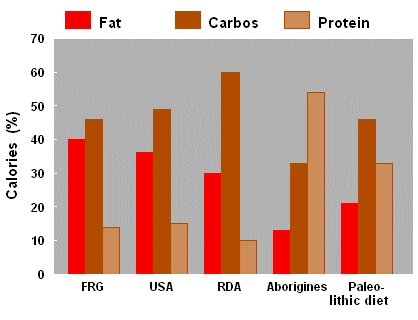Diet intake
and cardiovascular disease
Cardiovascular disorders cause more deaths
than any other disease. This fact is characteristic of affluent societies
indicating crucial influences of an unfavorable lifestyle involving diet
intake and lack of exercise. We addressed, therefore, mechanims which link
an excess caloric intake with hypertension and diabetes mellitus type-2.
The typical diet of industrialized societies consists of approx 40% fat calories
often leading to an inadequately high caloric intake when compared with
a sedentary lifestyle. It is recommended ("RDA, recommended dietary allowances")
to reduce the fat intake to approx. 30% and to increase carbohydrate consumption.
Since carbohydrates require the release of insulin, it remains controversial
whether a higher carbohydrate intake provides a risk by itself, particularly
when associated with insulin resistance. Irrespective of the question whether the intake of
carbohydrates or protein should be increased, there is compelling evidence
that a high fat intake is the main factor underlying a high caloric intake.
It should also be pointed out that our ancestors had a fat intake in the
range of 10-20% (socalled palaeolithic diet) as observed also in aborigines.
Australian aborigines have a very low incidence of hypertension and diabetes
mellitus type-2. When an urban lifestyle is acquired, a dramatic increase
in the incidence of cardiovascular disease has been observed. This indicates
that we have a predisposition for overweight or obesity but do not carry
genes which necessarily increase our body weight.


